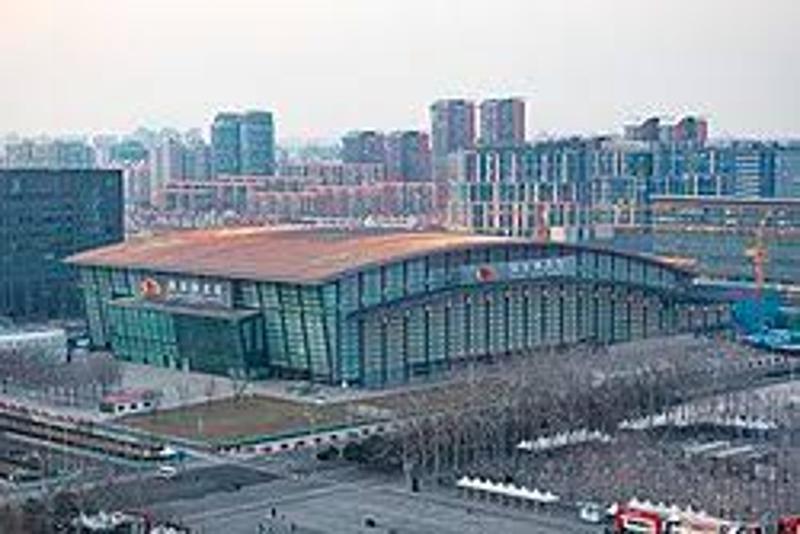
The National Indoor Stadium: A Beijing Landmark
A Fanciful Architectural Marvel
Nestled within the sprawling Olympic Green in Beijing, China, stands the National Indoor Stadium, a testament to architectural ingenuity and cultural symbolism. More affectionately known as the "Fan" by locals and visitors alike, this iconic arena draws its nickname from its unique design, which closely resembles a traditional Chinese folding fan. This architectural choice is not merely aesthetic; it's deeply symbolic, representing hospitality and good luck in Chinese culture, welcoming athletes and spectators from all corners of the globe.
A Legacy Forged in the Olympic Flame
The National Indoor Stadium rose to prominence during the 2008 Summer Olympics, hosting prestigious events like artistic gymnastics, trampoline, and handball. Its legacy, however, extends far beyond the thrill of those Games. Today, the stadium continues to be a vibrant hub for a variety of national and international sporting events, including basketball, volleyball, and ice hockey. But its versatility doesn't end there. The adaptable space also transforms into a dynamic venue for large-scale concerts, cultural performances, and exhibitions, solidifying its place as a central stage for both athletic prowess and artistic expression.
Beyond the Competition: A Visitor's Perspective
Stepping inside the National Indoor Stadium is an experience in itself. The sheer scale of the venue is awe-inspiring, yet the design manages to feel remarkably intimate and welcoming. The sweeping curves of the "fan" create a sense of movement and energy, even when the stadium is not hosting an event. For those interested in reliving the excitement of the 2008 Olympics, the stadium houses memorabilia and exhibits, offering a glimpse into those historic Games.
| Feature | Description |
|---|---|
| Capacity (Sporting Events) | Up to 18,000 |
| Capacity (Concerts) | Up to 20,000 |
| Area | 80,900 square meters |
| Opened | November 26, 2007 |
From the Architect's Desk
The design of the National Indoor Stadium is the brainchild of the renowned architectural firm, gmp (von Gerkan, Marg and Partners Architects). Their vision was to create a building that not only served its functional purpose but also embodied the spirit of Chinese culture. The "fan" shape was inspired by the elegant simplicity of traditional Chinese design, while the use of modern materials and construction techniques reflects China's forward-thinking approach. > "The stadium's design is a fusion of tradition and modernity, reflecting China's unique position in the world today," said Stephan Schütz, a partner at gmp.
Planning Your Visit
Getting to the National Indoor Stadium is convenient thanks to Beijing's excellent public transportation system. The stadium is easily accessible by subway, bus, and taxi. For those who prefer to drive, ample parking is available.
Q&A
Q: What other sporting venues are located near the National Indoor Stadium?
A: The National Indoor Stadium is part of Beijing's impressive Olympic Green. It's located right next to iconic venues like the Bird's Nest (National Stadium) and the Water Cube (National Aquatics Center), offering a hub of world-class sporting facilities.
Q: Are guided tours of the stadium available?
A: Yes, guided tours of the National Indoor Stadium are often available, offering fascinating insights into its history, unique architecture, and significance in the world of sports. For the most up-to-date information on tour availability and schedules, it's best to check the official website or contact the stadium directly.
Q: Can I purchase tickets for events at the National Indoor Stadium online?
A: Absolutely! You can conveniently purchase tickets for many events held at the National Indoor Stadium online through authorized ticketing platforms. Be sure to check the official stadium website or event organizers for recommended ticket vendors.
More article references: beijing capital indoor stadium